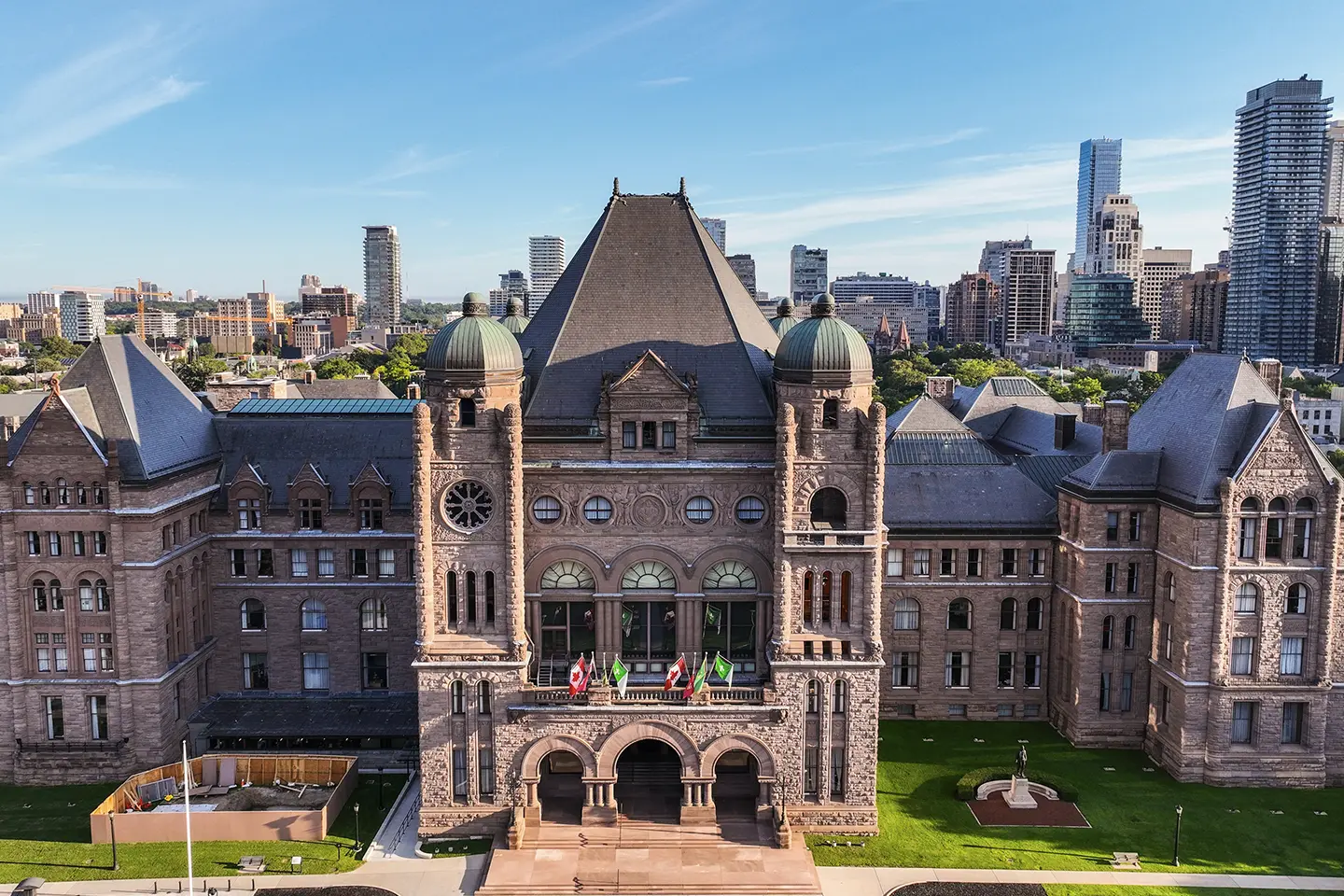Ontario Introduces Seventh Red Tape Reduction Bill, the Supporting People and Business Act

Yesterday, Ontario’s Associate Minister of Small Business and Red Tape Reduction, the Hon. Nina Tangri tabled another red tape reduction bill, the Supporting People and Business Act. This is the seventh Red Tape Reduction bi-annual package (‘Package’) that the Ford government has delivered, and Tangri’s first since taking on this role.
Over the past three years, Ontario has reduced its total number of regulatory compliance requirements by 6.5%. The government estimates that these changes have resulted in a net annual savings of $373 million for businesses, not-for-profits, municipalities, universities and colleges, school boards and hospitals in regulatory compliance.
While red tape reduction was a key commitment for the Ford government from the start of their mandate, during the pandemic the framing has shifted to reducing the red tape for businesses and communities in order to help Ontario be more competitive during the pandemic; lowering the costs of doing business while at the same time positioning Ontario’s economy to be stronger post-pandemic.
The government stated that once passed, the bill’s legislative, regulatory and policy changes will modernize and streamline government, and improve provincial rules and processes affecting people and businesses. The intent is that these proposed changes will make Ontario more competitive and support economic recovery by accelerating business growth, attracting investment, and creating jobs, while enhancing policies that protect our environment, health and safety and public interest.
The pandemic has highlighted some of the long-term challenges that businesses have faced as well as the increased demands facing businesses and Ontarians. Similar to the previous packages introduced, the Package contains a myriad of changes to government legislation, regulation and policies and removes complex and outdated rules that have been identified by ministries and stakeholders. It takes a whole-of-government approach, with proposed changes to various rules, regulations and legislation overseen by nearly every ministry. It has also prioritized the need to continue to harmonize rules with the federal government and other provinces.
Below you will find a list of a number of the key proposed changes; we encourage you to have a look at the bill or review the government’s news release, backgrounder or additional resource for the exhaustive list of proposed changes, and contact us with any questions about the details.
Highlights of the Package:
- Modernizing how nursing and rehabilitation services are delivered in schools for children with special needs, making it easier for them to access the therapies they need in school.
- Modernizing the governance of health regulatory colleges to strengthen their ability to respond more quickly to emerging issues in the healthy system and improve public trust and confidence in the colleges.
- Proposing regulatory changes to modernize the Healing Arts Radiation Protection Act to align with the current Health Canada Safety Codes to ensure they reflect the latest evidence and technology.
- Proposing regulatory changes to modernize the framework for the laboratory sector.
- Modernizing the accreditation model for veterinary facilities which will make it easier for veterinary practices to offer services to a winder range or species and clients.
- Proposing legislative changes to make it easier for people to become volunteers by providing free police record checks while also reducing administrative burden for police services.
- Proposing regulatory changes that set the groundwork for the government to allow licensed restaurants, bars and other hospitality businesses create or extend their outdoor patio spaces. This would make a temporary change that was allowed during the pandemic permanent.
- Proposing legislative and regulatory changes to the Cannabis Licence Act, 2018 that would enable cannabis retail stores to permanently offer delivery and curb-side pick-up services.
- Proposing regulatory amendments to modernize the framework for Defined Contribution pension plans.
- Proposing regulatory changes to streamline the planning system by providing municipal councils with greater authority in deciding what planning decisions can be made by committees of council or staff.
- Proposing legislative and regulatory changes to the Development Charges Act to help York Region fund its portion of the subway by enabling it to recover more eligible growth-related costs of the Yonge North Subway Extension through development charges.
- Modernizing environmental approvals to expand and promote the use of comprehensive site-wide approvals by allowing businesses to consolidate multiple environmental permissions and sets of conditions reducing duplicative administrative activities for businesses while still following the same environmental protection and compliance conditions.
- Modernizing environmental permissions by allowing exemptions and self-regulation for projects and activities where environmental risks are low.
- Proposing legislative changes to the Professional Foresters Act to provide clarity to the practice of professional forestry.
- Proposing legislative and regulatory changes to the Mining Act to attract global investment, expand the industry and create jobs by opening up opportunities to recover minerals, recover the costs of bulk sample testing on unpatented mining claims and cut red tape. Proposing policy and regulatory changes to allow for a pilot program for non-electric and electric-assist large cycles that will give municipalities another option to attract and boost tourism while maintaining road safety.
- Increasing financial supports and simplifying the application process for the Second Career program to help those looking for employment, train for occupations in high demand.
- Expanding online access to services for business and not-for-profit corporations by launching the new Ontario Business Registry and shifting more services to digital tools from paper-based filings and use of the traditional fax machines.
We expect clarity on the regulatory and policy changes introduced in this package will be forthcoming as the regulatory changes get posted to the appropriate regulatory registry and consultations get launched.
In addition, the government published the 2021 Burden Reduction Report: Fueling Future Growth by Modernizing Ontario’s Regulatory System. This Report includes a scorecard that shows progress ministry-by-ministry and compares the number of regulatory requirements as of June 30, 2021, to those at the baseline, as of June 29, 2018. While the numbers of regulatory requirements differ by ministry, depending on their role as a regulator, it shows that reductions have happened across the government.
For additional clarity please contact your Sussex consultant.


